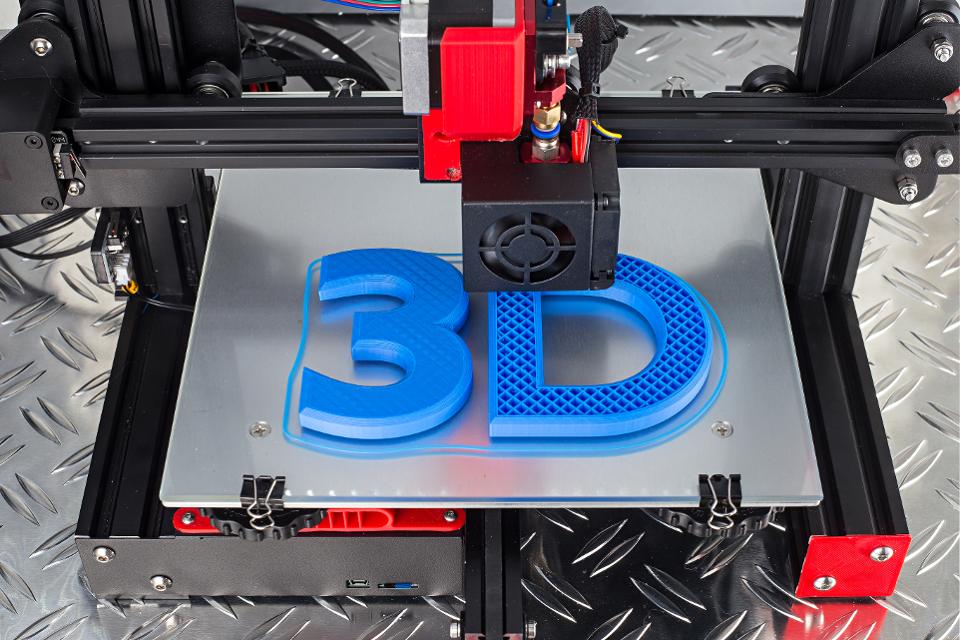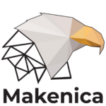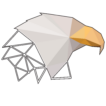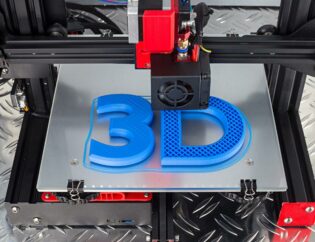
The world of 3D printing is continuously evolving, with new technologies emerging to push the boundaries of what’s possible. One such innovation is the belt 3D printer, a unique type of 3D printer that offers distinct advantages over traditional 3D printing methods. This blog will delve into the technology behind belt 3D printers, their unique benefits, challenges, applications, recent innovations, and future potential, supported by specific examples and case studies.
Understanding Belt 3D Printer Technology
What is a Belt 3D Printer?
A belt 3D printer is a type of 3D printer that uses a conveyor belt as the print bed. Unlike traditional 3D printers, which typically have a fixed print bed, the belt 3D printer’s bed moves continuously, allowing for theoretically infinite print lengths. The print head moves along the X and Y axes, while the belt moves along the Z-axis.
How Does It Work?
-
Conveyor Belt as Print Bed: The belt serves as both the print bed and the medium for moving the printed object. This allows for continuous printing and the ability to print objects longer than the printer itself.
-
Angled Print Head: The print head is usually angled at 45 degrees, which helps in managing the overhangs and supports during the printing process.
-
Continuous Printing: The conveyor belt moves incrementally, allowing for continuous printing of multiple objects in a sequence or a single, very long object.
Components of a Belt 3D Printer
- Conveyor Belt
The conveyor belt is the defining feature of a belt 3D printer. It is typically made from durable, heat-resistant materials such as polyimide or silicone. The belt must be precisely tensioned and aligned to ensure accurate 3D printing in India.
- Print Head
The print head in a belt 3D printer is similar to that in traditional 3D printers but is often angled to accommodate the unique printing process. It extrudes the filament layer by layer onto the moving belt.
- Frame and Gantry
The frame and gantry provide the structural support for the printer. They must be rigid and stable to maintain print accuracy, especially given the continuous movement of the belt.
- Motors and Control Systems
Motors and control systems manage the movement of the print head and the conveyor belt. These systems must be finely tuned to ensure synchronization and precision.
Unique Benefits of Belt 3D Printers
- Infinite Z-axis Printing
One of the most significant advantages of belt 3D printers is their ability to print objects of virtually any length. This is particularly useful for industries that require long parts, such as aerospace and automotive.
- Batch Production
Belt 3D printers can print multiple objects in a continuous sequence without manual intervention. This is ideal for batch production, reducing downtime and increasing efficiency.
- Reduced Print Failures
The continuous movement of the belt helps in reducing print failures. If a print fails, the printer can continue with the next object without stopping, thereby saving time and material.
- Space Efficiency
Belt 3D printers can be more space-efficient than traditional printers. Since the printed objects are moved off the print bed automatically, there’s no need for large storage space around the printer.
- Versatility in Printing
Belt 3D printers can handle a wide range of materials, including PLA, ABS, PETG, and even flexible filaments. This versatility makes them suitable for various applications, from prototyping to end-use parts when 3D Printing Bangalore.
Challenges of Belt 3D Printers
- Calibration and Maintenance
Belt 3D printers require precise calibration to ensure the belt moves correctly and the print head is aligned properly. Maintenance can also be more complex compared to traditional 3D printers.
- Print Quality
Achieving high print quality can be challenging due to the continuous movement of the belt. Warping and layer shifting are common issues that need to be addressed when 3D Printing in Bangalore.
- Software Compatibility
Not all 3D printing software supports belt 3D printers. Specialized software is often required, which can be a barrier for some users.
- Cost
Belt 3D printers can be more expensive than traditional 3D printers due to their specialized components and technology. This can be a barrier for hobbyists and small businesses for offering affordable 3D Printing services.
- Learning Curve
There is a learning curve associated with belt 3D printers. Users must understand the unique aspects of the technology, such as belt tensioning, print head alignment, and slicing software settings.
Applications of Belt 3D Printers
Industrial Manufacturing
Belt 3D printers are ideal for industrial manufacturing, where long parts and batch production are common in 3D Printing service Bangalore. Industries such as aerospace, automotive, and construction can benefit significantly from this technology.
Aerospace
In the aerospace industry, belt 3D printers can produce long, lightweight components such as wings, fuselage sections, and structural supports. The ability to print these parts in a single piece reduces the need for assembly and improves structural integrity.
Automotive
The automotive industry can use belt 3D printers to produce long parts such as bumpers, chassis components, and interior panels. This reduces production time and costs, while also allowing for customization and rapid prototyping.
Construction
In the construction industry, belt 3D printers can produce large, continuous components such as beams, columns, and panels. This technology can be used for on-site printing, reducing transportation costs and lead times.
Prototyping
For rapid prototyping, belt 3D printers offer the advantage of producing multiple iterations quickly. This is particularly useful for product development and testing.
Consumer Products
Companies developing consumer products can use belt 3D printers to create prototypes of various sizes and shapes. This allows for quick testing and iteration, reducing time to market with 3D Printing services in Bangalore.
Medical Devices
In the medical field, belt 3D printers can produce prototypes of medical devices such as prosthetics, implants, and surgical instruments. This enables rapid testing and customization to meet patient needs.
Customization and Personalization
Belt 3D printers can be used for creating customized and personalized products, such as bespoke furniture, fashion accessories, and more.
Furniture
Furniture designers can use belt 3D printers to create custom pieces that fit specific spaces and styles. The ability to print long, continuous components allows for unique designs and seamless construction in 3D Printing service in India.
Fashion
In the fashion industry, belt 3D printers can produce custom accessories such as belts, jewelry, and footwear. This technology enables designers to create intricate, personalized pieces with ease.
Educational and Research Institutions
Educational and research institutions can use belt 3D printers for various projects, from engineering and design to medical research.
Engineering
Engineering students and researchers can use belt 3D printers to create prototypes and models for testing and analysis. This hands-on experience with advanced technology prepares students for careers in various industries.
Medical Research
In medical research, belt 3D printers can be used to create models of organs, tissues, and bones for study and experimentation. This technology enables researchers to explore new treatments and surgical techniques.
https://www.youtube.com/watch?v=sE8HkaP0fEU
Innovations in Belt 3D Printing
Advanced Materials
Recent innovations in belt 3D printing include the use of advanced materials such as carbon fiber, metal composites, and high-temperature polymers. These materials expand the range of applications and improve the durability and functionality of printed objects.
Carbon Fiber
Carbon fiber-reinforced filaments provide high strength and low weight, making them ideal for aerospace and automotive applications. Belt 3D printers can produce long, continuous carbon fiber components with excellent mechanical properties when online 3D Printing Nagpur.
Metal Composites
Metal composite filaments, such as those containing stainless steel or copper, allow for the creation of metal-like parts with enhanced strength and conductivity. These materials are suitable for industrial and electronic applications.
High-Temperature Polymers
High-temperature polymers, such as PEEK and PEI, offer excellent thermal and chemical resistance. Belt 3D printers can use these materials to produce parts for demanding environments, such as aerospace and medical applications.
Improved Software
Software advancements have made it easier to design and print with belt 3D printers. New slicing software specifically designed for belt 3D printing helps in optimizing print settings and improving print quality.
Slicing Algorithms
Advanced slicing algorithms can optimize the print path and layer height for belt 3D printers, reducing print time and improving surface finish. These algorithms take into account the unique movement of the conveyor belt and the angled print head.
Real-Time Monitoring
Software improvements also include real-time monitoring and control of the printing process. Users can track the progress of their prints, adjust settings on the fly, and receive notifications of any issues.
Hybrid Printing
Hybrid belt 3D printers that combine additive and subtractive manufacturing processes are emerging. These printers can print an object and then mill or finish it, providing a higher level of precision and surface finish.
Additive and Subtractive Processes
Hybrid printers use both additive (3D printing) and subtractive (milling, cutting) processes to create parts. This combination allows for the production of complex geometries with high precision and smooth surfaces.
Our manufacturing experience can help you make decisions faster.
Choose one to get started
Hybrid belt 3D printers are suitable for applications that require tight tolerances and high-quality finishes, such as aerospace components, medical devices, and precision tools.
Case Studies
Blackbelt 3D
Blackbelt 3D is one of the pioneers in belt 3D printing technology. Their printers are used in various industries, including aerospace and automotive. One notable case study involves the production of a 6-meter-long drone wing. Traditional 3D printers would have required multiple parts and assembly, but the Blackbelt 3D printer produced the wing in a single piece, reducing weight and improving structural integrity.
Aerospace Application
In the aerospace industry, Blackbelt 3D printers have been used to produce long, lightweight components such as wings, fuselage sections, and structural supports. The ability to print these parts in a single piece reduces the need for assembly and improves structural integrity.
Automotive Application
In the automotive industry, Blackbelt 3D printers have been used to produce long parts such as bumpers, chassis components, and interior panels. This reduces production time and costs, while also allowing for customization and rapid prototyping.
Creality CR-30
Creality, a well-known name in the 3D printing industry, introduced the CR-30, also known as the 3DPrintMill. This belt 3D printer has been used by small businesses and hobbyists for batch production of items like phone stands, miniatures, and custom parts. One user reported producing over 100 phone stands in a single print run, significantly reducing production time and cost.
Small Business Application
Small businesses have used the Creality CR-30 for batch production of various items, such as phone stands, miniatures, and custom parts. The ability to produce multiple items in a single print run reduces production time and costs, making it an attractive option for small-scale manufacturing.
Hobbyist Application
Hobbyists have also embraced the Creality CR-30 for personal projects and custom creations. The printer's ability to handle a wide range of materials and produce long, continuous prints has made it a popular choice among enthusiasts.
Future Potential of Belt 3D Printers
Mass Customization
As the demand for customized products grows, belt 3D printers will play a crucial role in mass customization. The ability to produce unique items in large quantities without significant downtime will be a game-changer for many industries.
Consumer Products
In the consumer products industry, belt 3D printers can be used to create customized items such as phone cases, jewelry, and home decor. This technology enables companies to offer personalized products at scale, meeting the growing demand for unique and individualized items with 3D Printing services.
Medical Devices
In the medical field, belt 3D printers can produce customized prosthetics, implants, and surgical instruments. This allows for tailored solutions that meet the specific needs of individual patients, improving outcomes and quality of life.
Distributed Manufacturing
Belt 3D printers can facilitate distributed manufacturing, where production is decentralized and closer to the end consumer. This reduces shipping costs, lead times, and carbon footprint.
Local Production
Distributed manufacturing allows for local production of goods, reducing the need for long-distance shipping and associated costs. This approach also enables faster response times to market demands and reduces the environmental impact of transportation.
On-Demand Manufacturing
Belt 3D printers can support on-demand manufacturing, where products are produced as needed rather than in large batches. This reduces inventory costs and waste, while also allowing for greater flexibility in meeting customer needs.
Integration with IoT and AI
The integration of belt 3D printers with IoT and AI can lead to smarter manufacturing processes. Predictive maintenance, real-time monitoring, and automated quality control are some of the potential benefits.
Predictive Maintenance
IoT sensors can monitor the performance of belt 3D printers in real-time, detecting potential issues before they lead to failures. This enables predictive maintenance, reducing downtime and extending the lifespan of the equipment.
Real-Time Monitoring
AI algorithms can analyze data from IoT sensors to provide real-time insights into the printing process. This allows for continuous optimization and adjustment, improving print quality and efficiency.
Automated Quality Control
AI-powered quality control systems can inspect printed parts for defects and deviations from specifications. This ensures consistent quality and reduces the need for manual inspection.
Expansion into New Industries
As the technology matures, belt 3D printers will find applications in new industries such as healthcare, where they can be used for printing prosthetics, implants, and even bioprinting tissues and organs.
Healthcare
In the healthcare industry, belt 3D printers can produce customized prosthetics, implants, and surgical instruments. This allows for tailored solutions that meet the specific needs of individual patients, improving outcomes and quality of life.
Bioprinting
Belt 3D printers have the potential to revolutionize bioprinting, where living cells and biomaterials are printed to create tissues and organs. This technology could lead to breakthroughs in regenerative medicine and organ transplantation.
Conclusion
Belt 3D printers represent a significant advancement in the field of additive manufacturing. Their unique ability to print objects of virtually any length, coupled with the potential for continuous production, makes them a valuable tool for various industries. While there are challenges to overcome, ongoing innovations and the growing adoption of this technology suggest a bright future. As belt 3D printers continue to evolve, they will undoubtedly unlock new possibilities and transform the way we approach manufacturing and production.


